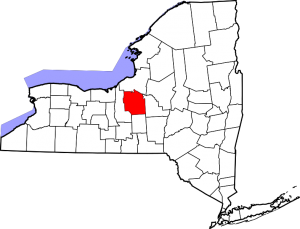By NewsDesk @infectiousdiseasenews
Onondaga County health officials are reporting that a fox in Onondaga County has tested positive for rabies. Three residents were exposed to rabies as a result of an encounter with the rabid fox; however, there are no human cases of rabies in Onondaga County.

Onondaga County Health Commissioner, Dr. Indu Gupta said, “This is the time of year that the public may encounter wildlife. It is important not to touch or feed wildlife because they may be rabid.”
Health officials offer the following advice to prevent rabies in yourself or your pets:
- Make sure rabies vaccinations are up-to-date for all your pets (dogs, cats, and ferrets). New York State Public Health Law requires that all puppies and kittens get their initial shot at three months of age, the first booster shot within 1 year after the initial shot, and then a booster shot every three years. Ferrets must get a shot every year.
- Maintain control of your pets. Keep cats and ferrets indoors and keep dogs under direct supervision.
- Make sure to wear gloves before tending to your dog after a fight with a wild animal. Don’t forget to consult a veterinarian for further care.
- Call your town or local municipality for assistance or guidance on how to remove stray or wild animals from your neighborhood.
- Never try to approach nor pet a wild or unfamiliar animal, including stray cats.
- Do not bring a wild animal, such as a fox, raccoon, woodchuck, or skunk, etc. into your home or treat them as pets.
- Teach Children to Stay Safe Around Animals
So far in 2019, five animals (two bats, one cat, one raccoon, and one fox) have tested positive for rabies in Onondaga County.
Rabies is a fatal disease that attacks the brain and spinal cord. It can take several weeks to several months for rabies symptoms to appear. Although there is no treatment for rabies, it is PREVENTABLE in both human and pets.

